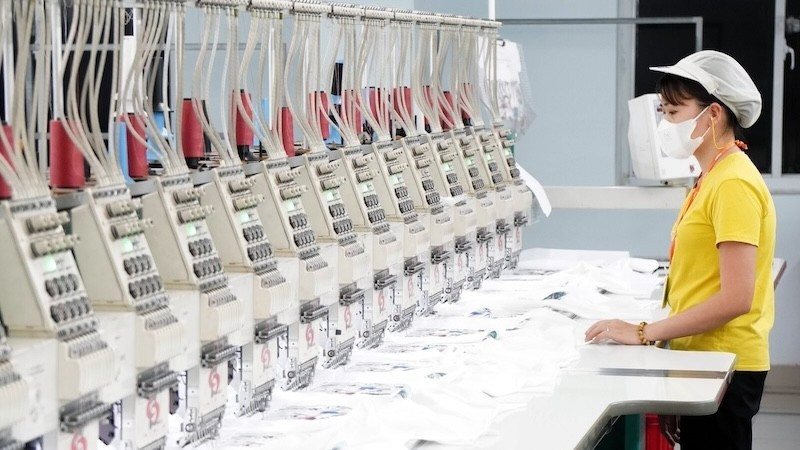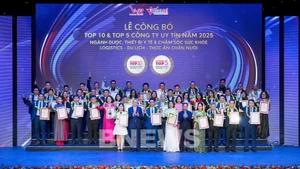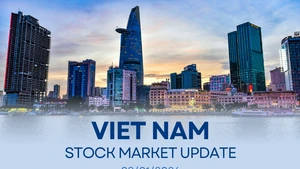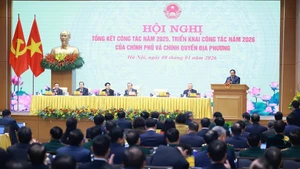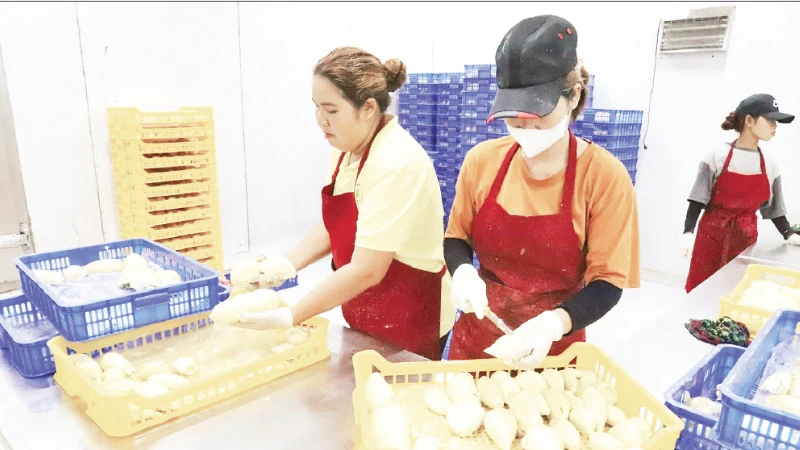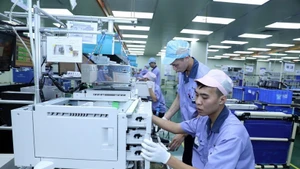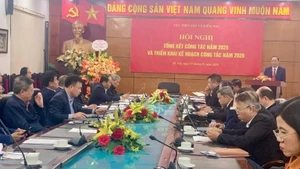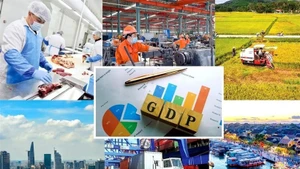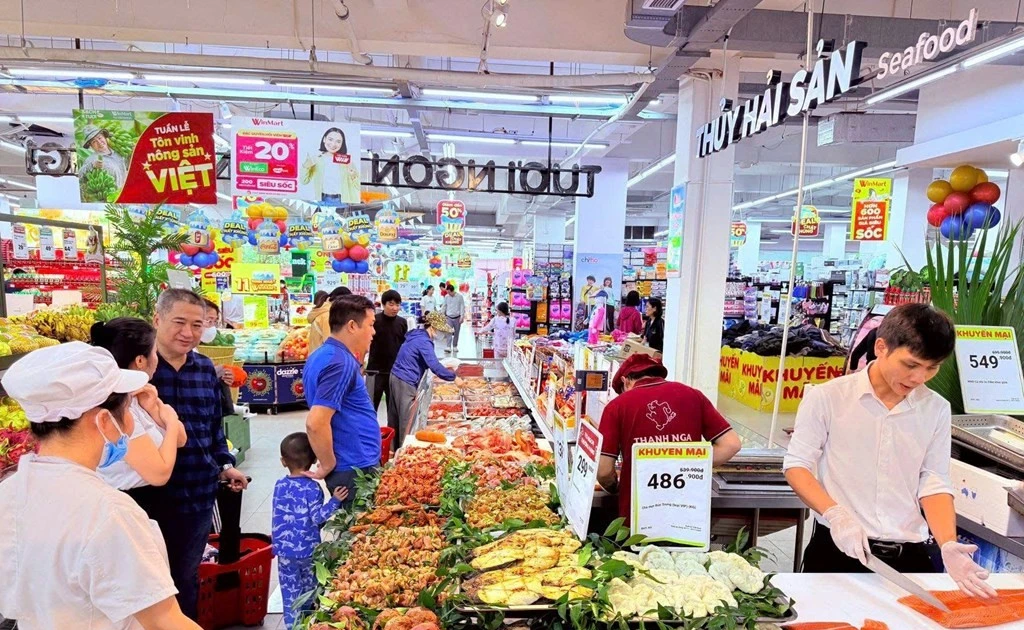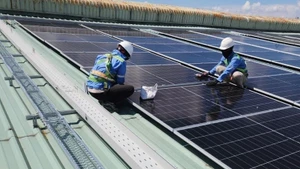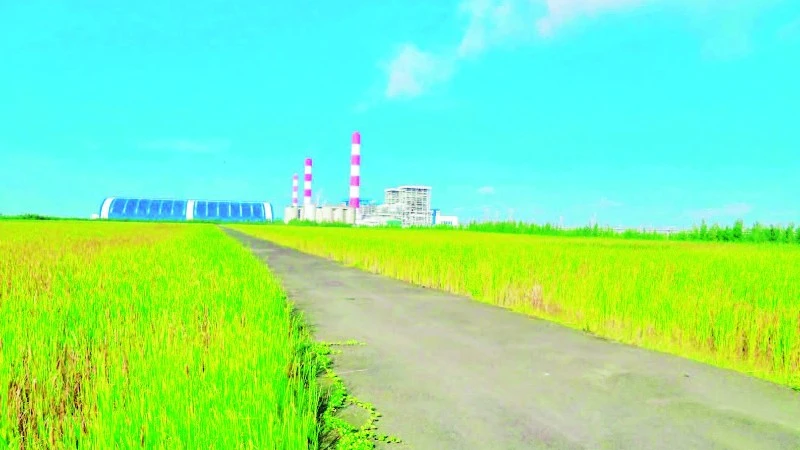The World Trade Organisation (WTO) forecasts that global trade will grow by just 0.9% in 2025 (compared with 2.9% in 2024), far below the average of previous periods.
Untapped potential
According to the Ministry of Industry and Trade, the Middle East is now a dynamic import market, with its total import value estimated at over 1.200 billion/year. Notably, 80–90% of the food demand of countries of the Gulf Cooperation Council (GCC) depends on imports, opening major opportunities for exporters.
Large retail and distribution groups in the Middle East such as Lulu Hypermarket (UAE), Al Othaim Markets (Saudi Arabia), and Choithrams and Citi Hypermarkets (Kuwait) have shown strong interest in high-quality goods from Viet Nam.
These businesses all took part in the serious of events “Viet Nam International Sourcing 2025”, held in Ho Chi Minh City on September 4-6 to seek the supply source for tropical fruits, vegetables, and organic products meeting GAP and Halal standards, snacks, frozen seafood, spices, plasticware, wooden goods, eco-friendly products, clothing, scarves, and high-quality accessories, among others.
This is an opportunity for Vietnamese firms to directly introduce their products to major distribution chains, seek long-term export contracts, and expand markets into regions with high purchasing power and strong growth potential such as Middle East.
Eastern Europe is also emerging as a promising market for Vietnamese goods because its standard requirements are suitable with production and export capabilities of domestic businesses.
For example, in Belarus, many modern retail systems and importers of food, beverages, fast-moving consumer goods, footwear and textiles have begun actively seeking stable supplies from Viet Nam. Benefiting from its position as a gateway into the Eurasian Economic Union, Belarus can also serve as a springboard for Vietnamese goods to penetrate other regional markets.
Meanwhile, Hungary and Bulgaria also show steady demand for food, beverages, nutritional products, and household appliances. Vietnamese firms can use import channels in the two countries to expand into Central and Eastern Europe and the Balkans, where reasonable prices, stable supply source, and EU-standard packaging and labelling are often prioritised criteria. With the right approach, these could become “new growth areas” for Vietnamese exports in regional supply chains.
Making the most of opportunities
Ta Hoang Linh, Head of the Department of Foreign Market Development under the Ministry of Industry and Trade, said that in the context of the global trade is experiencing unprecedented fluctuations that have heavily impacted production and exports, Viet Nam has effectively implemented a strategy of diversifying markets, products, and distribution channels to maintain and enhance its position in international trade for many years.
Thanks to a network of 17 free trade agreements with over 60 countries and regions, Viet Nam has sustained impressive export growth for many consecutive years. In the first eight months of 2025, the exports of the whole country increased by 14.8%, resulting in a trade surplus of 13.99 billion USD.
The potential for expanding exports remains substantial, but Vietnamese businesses still face significant challenges in seizing available opportunities. The supply capacity of businesses remains limited, particularly in processing and manufacturing sectors that require high-tech and strict regulations. Many Vietnamese firms are still dependent on imported raw materials as well as have not invested sufficiently in modern technologies, making it difficult to meet requirements for quality, quantity, and delivery schedules.
Meanwhile, trade barriers such as anti-dumping duties and trade-defence investigations from many countries pose major challenges, requiring Vietnamese businesses to strictly comply with rules of origin and intellectual property protection. Competition is also intensifying, both domestically and internationally. Foreign direct investment enterprises often hold advantages in capital, technology, and distribution networks, forcing domestic businesses to work harder to win contracts.
Therefore, businesses must invest more heavily in production technology, deep processing, and brand development that align with international market trends, while ensuring compliance with global standards on quality and sustainable development. The application of technologies such as blockchain for traceability and the production of eco-friendly goods will help improve the added value and competitiveness of Vietnamese products.
At the same time, businesses need to strengthen their understanding of free trade agreements, particularly rules of origin, to maximise tariff preferences; and build close relationships with distributors and international partners through connection events organised by the Ministry of Industry and Trade. For its part, the Ministry of Industry and Trade will continue focusing on expanding exports to potential markets such as India, Russia, the Middle East, and Latin America, while promoting the development of supporting industries to reduce dependence on imported materials, thereby improving the added value and competitiveness of exported goods.
